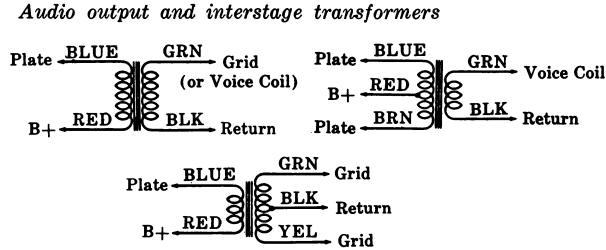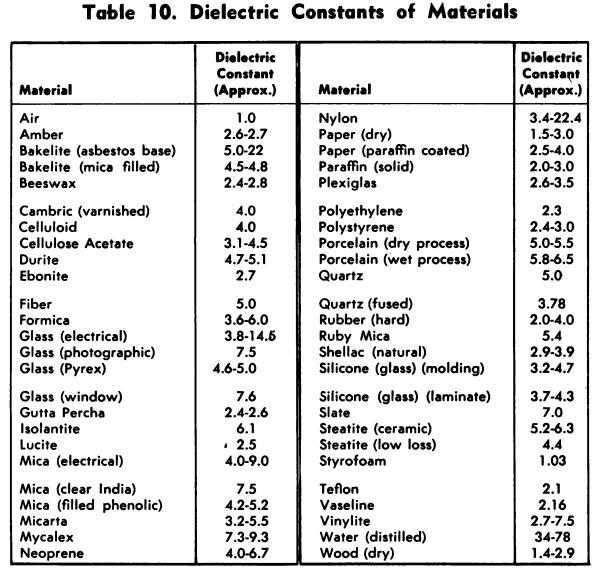
Miscellaneous Data Part 1
DIELECTRIC CONSTANTS OF MATERIALS
The dielectric constants of most materials vary for different temperatures and frequencies. Likewise, small differences in the composition of materials will cause differences in the dielectric constants.
A list of materials and the approximate range (where available) of their dielectric constants are given in Table 10.

The values shown are accurate enough for most applications. The dielectric constants of some materials (such as quartz, Styrofoam, and Teflon) do not change appreciably with frequency.
METRIC PREFIXES
The metric system, whereby a different prefix is assigned for each order of magnitude, is particularly suited for electronic values.
In 1958 the International Committee on Weights and Measures assigned prefixes for the ninth and twelfth orders of magnitude (both positive and negative). (See Table 11.)
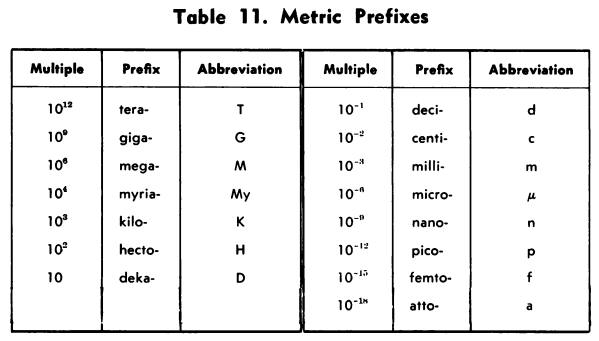
This system eliminates the cumbersome double prefixes (micromicro-, kilomega-, etc.). In 1959 the National Bureau of Standards began using these terms; however, acceptance by industry in the United States has been slow, particularly in using the newer term “picofarad”’ instead of ‘“micro microfarad.”’
METRIC CONVERSION TABLE
Table 12 gives the number of places, and the direction, the decimal point must be moved to convert from one metric notation to another.
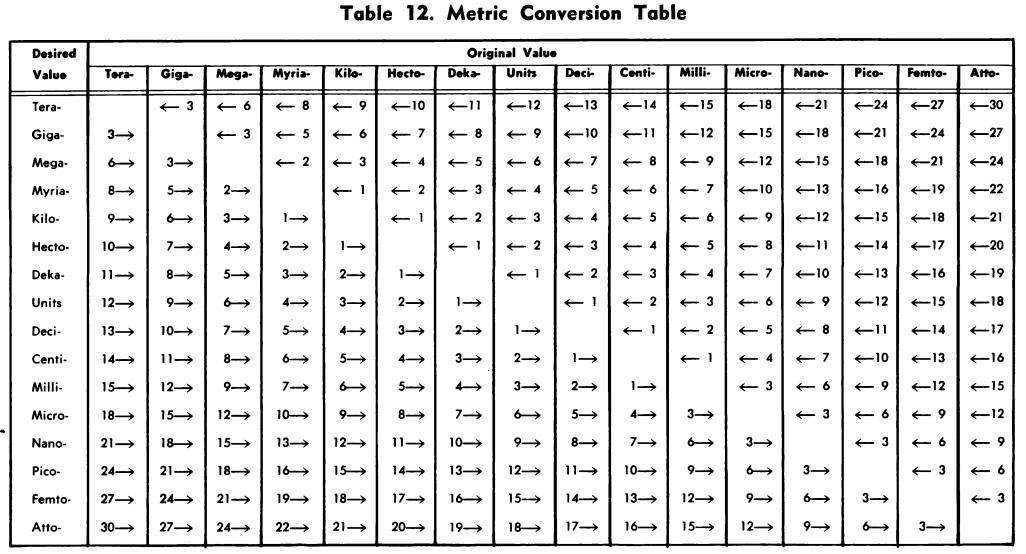
The value labeled “units” is the basic unit of measurement—e.g., ohms, farads, etc.
To use the chart, find the desired value in the left-hand column; then follow the horizontal line across to the column with the prefix in which the original value is stated.
The number and arrow at this point indicate the number of places and the direction the decimal point must be moved to change the original value to the desired value.
CONVERSION FACTORS
The following table lists the multiplying factors necessary to convert from one unit of measure to another, and vice versa. To use the table, locate the unit of measure you are converting from or the one you are converting to in the first column.
Opposite this listing are the multiplying factors for converting either unit of measure to the other unit of measure.
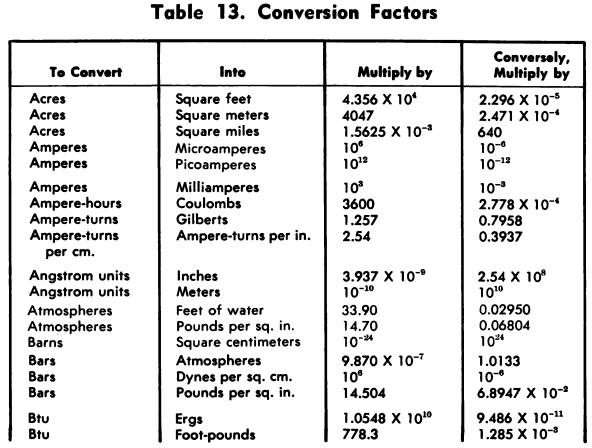

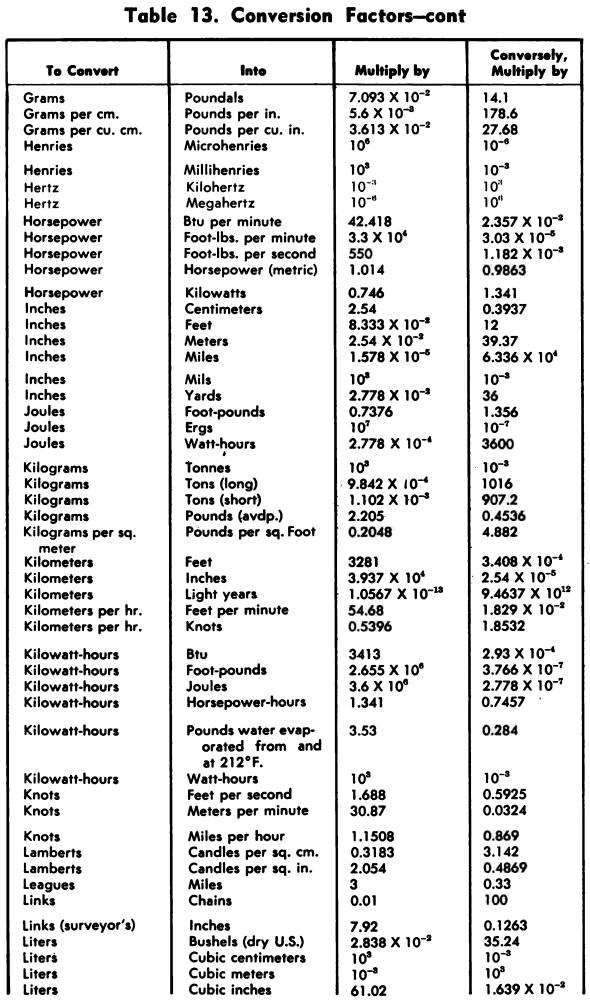

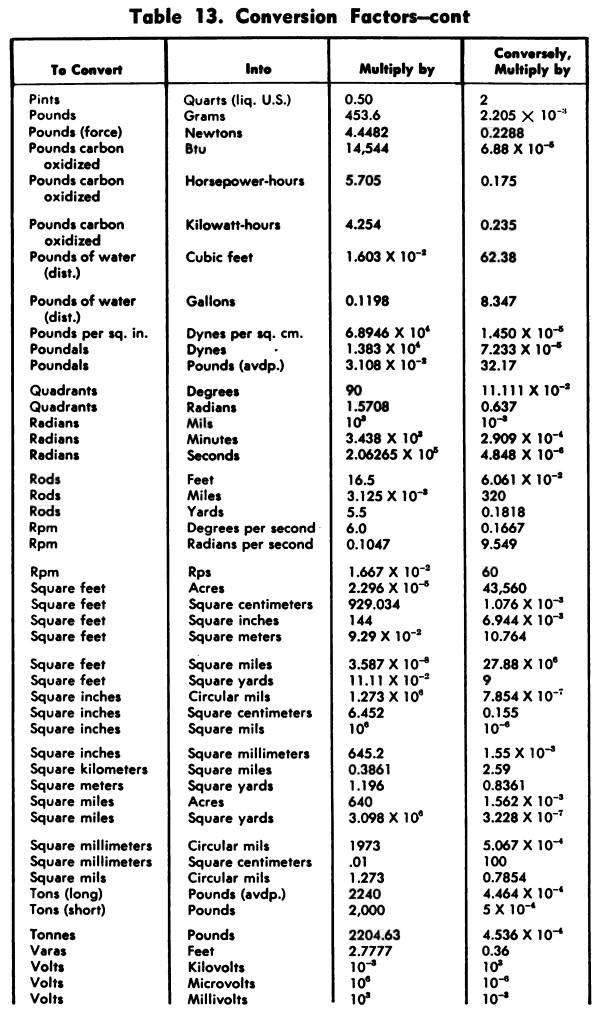
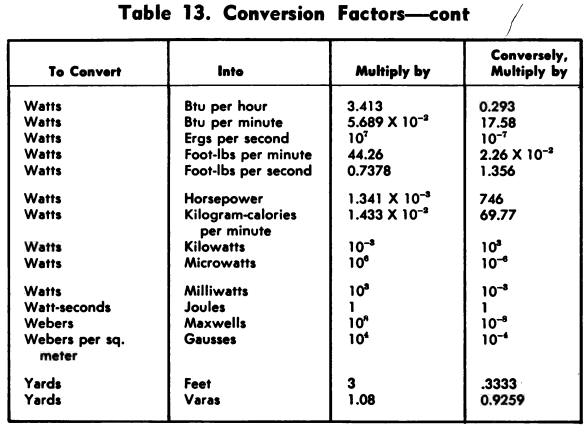
COAXIAL CABLE CHARACTERISTICS
Table 14 lists the most frequently used coaxial cables. The electrical specifications include the impedance in ohms, capacitance in picofarads per foot, attenuation in dB per 100 feet, and the outside diameter.
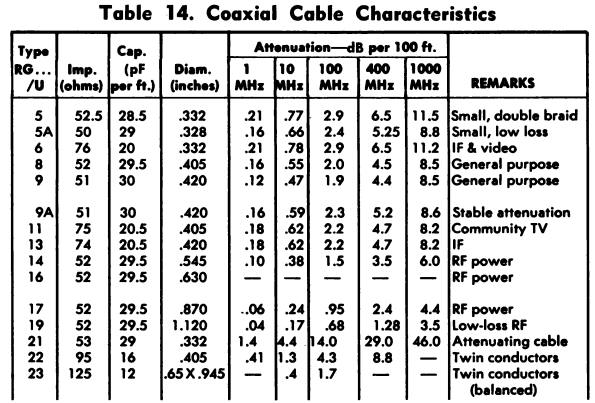
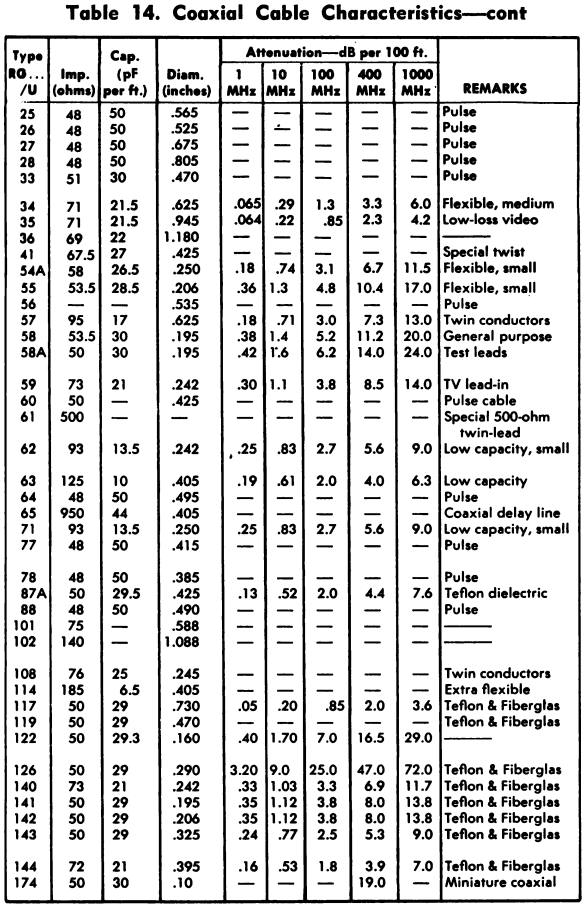
EIA TRANSFORMER COLOR CODE
The diagrams in Figs. 77, 78, and 79 illustrate the color code for transformers recommended by the EIA.
Fig. 77

Fig. 78

Fig. 79
